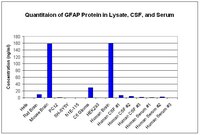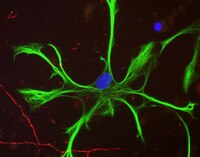NS830 Sigma-AldrichGFAP ELISA Kit
Recommended Products
Overview
| Replacement Information |
|---|
Key Specifications Table
| Analytes Available | Species Reactivity | Key Applications | Detection Methods |
|---|---|---|---|
| GFAP | M, R, H | ELISA | Chromogenic |
| References |
|---|
| Product Information | |
|---|---|
| Components |
|
| Detection method | Chromogenic |
| HS Code | 3002 15 90 |
| Quality Level | MQ100 |
| Applications | |
|---|---|
| Key Applications |
|
| Physicochemical Information | |
|---|---|
| Sensitivity |
|
| Standard Curve Range |
|
| Dimensions |
|---|
| Materials Information |
|---|
| Toxicological Information |
|---|
| Safety Information according to GHS |
|---|
| Safety Information |
|---|
| Product Usage Statements | |
|---|---|
| Usage Statement |
|
| Packaging Information | |
|---|---|
| Material Size | 1 kit |
| Material Package | 96 wells |
| Transport Information |
|---|
| Supplemental Information |
|---|
| Specifications |
|---|
| Global Trade Item Number | |
|---|---|
| Catalog Number | GTIN |
| NS830 | 04053252006913 |
Documentation
GFAP ELISA Kit SDS
| Title |
|---|
Brochure
| Title |
|---|
| A closer look at immunoassay platforms: Beyond fit for purpose |
| Custom Immunoassay Menu of Services |
Data Sheet
| Title |
|---|
| Full Service Custom-built Assays |
User Guides
| Title |
|---|
| GFAP ELISA Kit |










